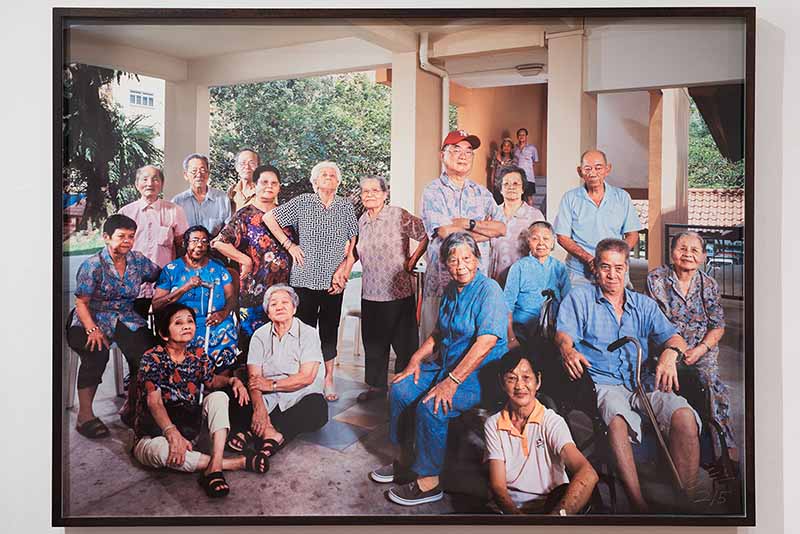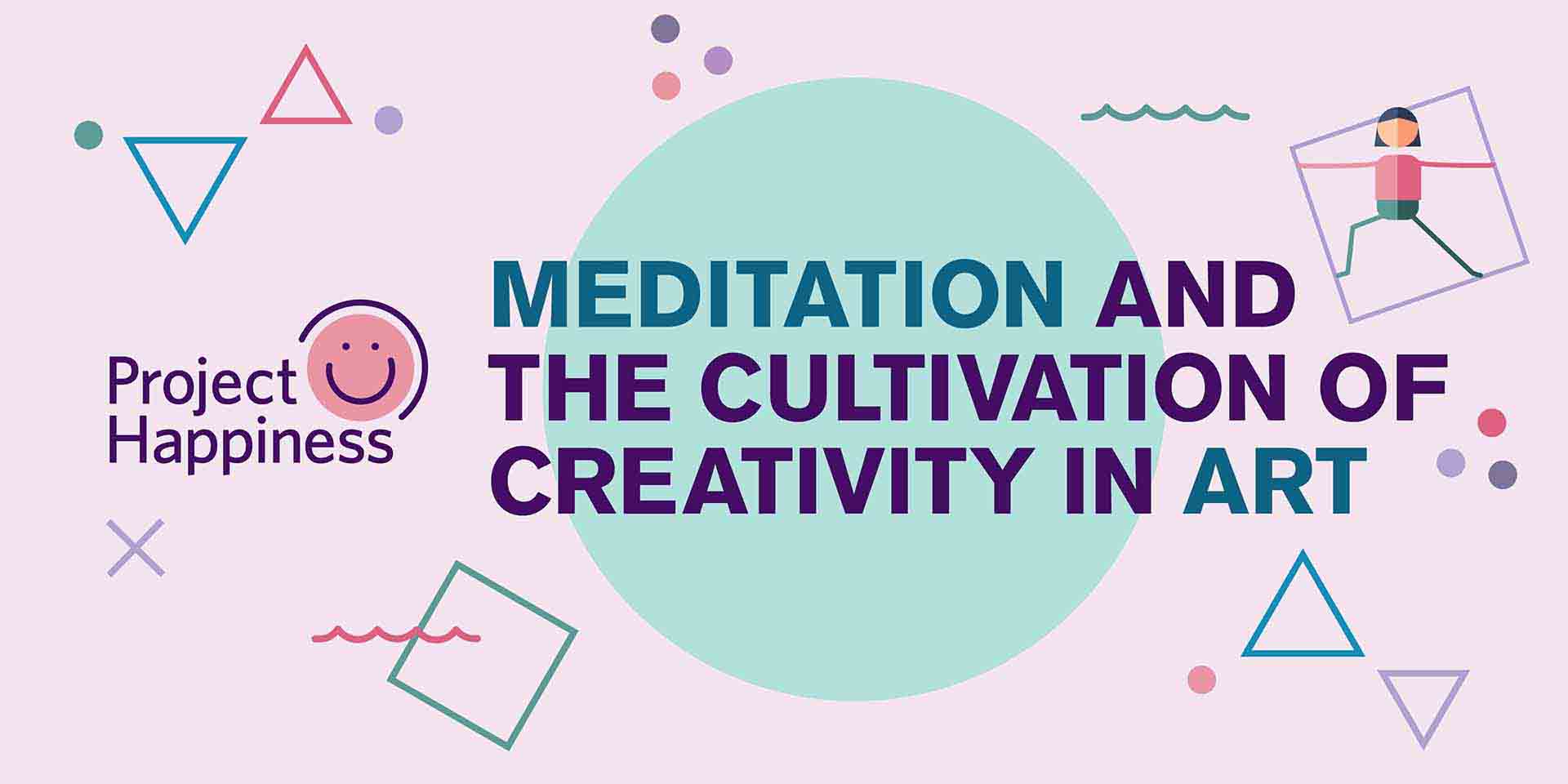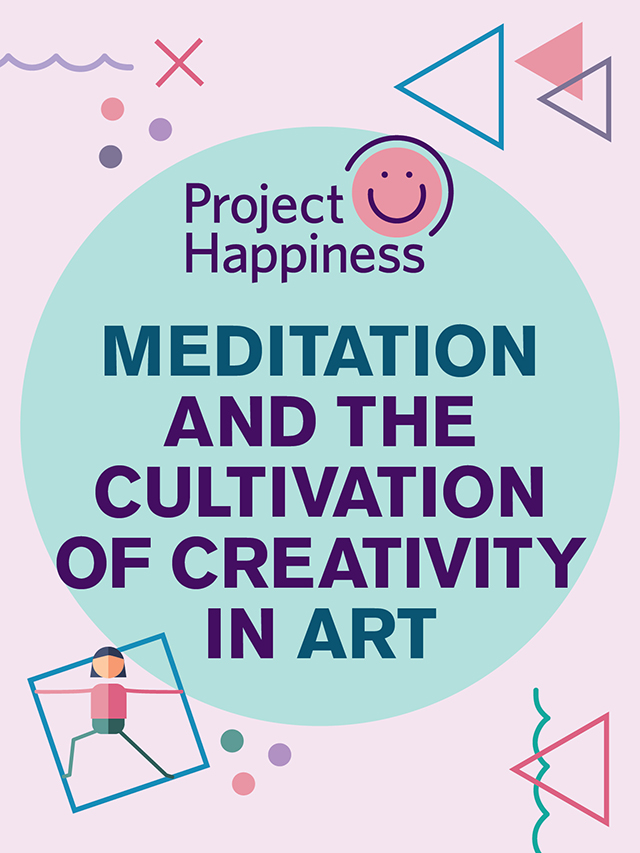Meditation and the Cultivation of Creativity in Art
PART 3 OF 4
Can meditation benefit creativity? Dr Russell Chan unpacks how practicing open-monitoring style meditation (OMM) can broaden your mind and open up your imagination.
When we appreciate art, we tend to admire the completed piece for all its complexities, symbolism, colours and the emotions conveyed. We often ignore the fact that all artworks start from “blank” canvases or “emptiness,” which can be daunting concepts. Emptiness is a state that is devoid of anything at all, but when art emerges from this emptiness, it is often attributed to a particular human trait – creativity.
Creativity is often considered an innate trait, which suggests that it isn’t cultivated; one is thought to be “born” with it. However, researchers have been working to dispel this myth, and their studies have increasingly proven that creativity is one of humans’ many cognitive abilities1. When artists master a distinctive style in their works, it means that they have achieved a level of consistency in their creative approach. This suggests that the creative approach is actually trainable, replicable and can be consistently implemented. It has been shown that creativity can be developed through different mental approaches, including meditation1,2.
Open-monitoring meditation (OMM) is a meditation style that trains your attention in a different manner. Compared to FAM, the process of OMM is characterised by far fewer steps and focuses on adopting a nonjudgmental attitude. It usually begins with a simple body scan, followed by long periods of silence where one pays attention to one’s breathing and any bodily sensations that arise. This allows the practitioner to direct his or her attention towards sensory processes in a “nonreactive” and “mindful” manner4. Beginners who attempt to practice this technique may find it difficult to maintain focus and become distracted during the long periods of silence and “nonreactivity” because of the relatively fewer steps compared to FAM. OMM is considered more difficult than FAM as such, and is usually introduced to practitioners during the later stages of training. Meditation practices like Vipassana (insight) and Mindfulness are considered OMM styles.
Another effect of OMM’s minimalist approach is cultivating “mental silence.” Mental silence involves moments where we stop generating spontaneous phenomena in the mind. This is known as being present in the moment, where time “stops momentarily”; what is left is a contemplation of the current circumstances. While beginner meditators might find this harder to achieve, this silence combined with the body in a state of low stimulus helps to bring about a clarity in the mind that can be challenging during working hours of a day. This mental clarity is akin to the aforementioned “blank” canvas: a springboard for creativity in our daily lives. Mental clarity allows us to see the next steps in the tasks at hand more plainly, including enhancing the motivation to complete them in a timely manner.
OMM is thought to increase creativity5 by inducing a state of divergent thinking, where the mind actively searches for more solutions in various situations2,6. During practice, the search for bodily sensations often broadens one’s attention, allowing different sources of information to be integrated by the mind. This leads to the formation of new ideas and solutions. Integrating information requires cognitive flexibility (the ability to switch between thinking about multiple things at the same time) and is an important attribute that helps one to explore various creative solutions to a problem. This is considered the mechanism by which OMM benefits creativity. However, it is important to remember that the goal of meditation is observe your issues arise naturally during the practice of mental silence. In the process of contemplation, solutions to problems often manifest organically. While this may sound counter-intuitive, it is often advised to allow the processes of meditation to take care of the effects.
When is the best time to practice? Working with the natural body rhythms, it is most beneficial to practice first thing in the morning, even before breakfast. This is a time when the mind is typically less active, and the body is calmer. This practice can often help to frame your entire day with the benefits of a clear and creative mind.
During the Unwind with SAM | Art & Meditation sessions, practitioner Cheryl Tan taught a style of meditation that was akin to OMM. She focused on guiding participants to contemplate an artwork and allow different sensations to arise without judging or reacting to them. Let us apply this to Jing Quek’s artwork, Singapore Idols – Aunties & Uncles.

Jing Quek, Singapore Idols – Aunties & Uncles, 2009. Digital Inkjet with Ultrachrome K3, 121.9 cm x 175.3 cm
Part of the Singapore Idols series of photographs, Aunties and Uncles is an artwork that celebrates the everyman and common, everyday situations and environments in Singapore. Through these photographs, Jing Quek deconstructs distinctive communities in Singapore in a way that challenges the viewer’s perceptions or preconceived notions. In Aunties & Uncles, Quek captures a group of senior citizens posing confidently at the void deck of a Housing Development Board block of flats, intimating their strength and sense of connection with one another.
Observe and contemplate the artwork. It may invoke different sensations within us. Try to explore these sensations within the practice and attempt to witness these sensations without judgement. How do you feel? Does your breath quicken or slow down? Make no attempt to change your breathing pattern, speed or duration of it; just observe your breath. Are you able to feel the temperature of your breath without thinking about the temperature? No words, no naming of your experience, just awareness of the sensations? Do any thoughts of your past or present arise whilst observing the artwork? Let those thoughts and the image dissolve and simply be still. See if you can feel a stillness within your mind for the next one or two minutes.
If you were able to practice the monitoring process for a few minutes, then you have successfully created a moment that could benefit your creative abilities. Each time you become aware of arising sensations, be assured that each process is helping you to improve your ability to integrate different types of information. This alone will encourage your appreciation of art, among other creative endeavours.
This is the third part of a four-part article series on the science behind meditation and how to apply it to art. Please click here to read part one and here for part two.
About the author
Dr Russell Chan is a neuroscientist. He is fascinated by the mind and its potential for cognitive performance. Using different neuroimaging techniques, Chan investigates how meditation can impact our health, well-being and performance. He has been a yoga and meditation teacher for the last eight years and is the Director of www.primeyourmindnow.com, a website examining meditation, spirituality, cognitive neuroscience and motor control. Over the next few weeks, as you explore the unique style of Yoga Nidra meditation with him, he hopes that you will enjoy the journey and come to a deeper understanding of the science behind meditation.
_____
References:
1 Baas M, Nevicka B, Ten Velden FS. Specific Mindfulness Skills Differentially Predict Creative Performance. Pers Soc Psychol Bull. 2014;40(9):1092-1106.
2 Colzato LS, Ozturk A, Hommel B. Meditate to Create: The Impact of Focused-Attention and Open-Monitoring Training on Convergent and Divergent Thinking. Frontiers in psychology. 2012;3:116.
3 Chan RW, Immink MA, Lushington K. The influence of focused-attention meditation states on the cognitive control of sequence learning. Consciousness and cognition. 2017;55:11-25.
4 Lardone A, Liparoti M, Sorrentino P, et al. Mindfulness Meditation Is Related to Long-Lasting Changes in Hippocampal Functional Topology during Resting State: A Magnetoencephalography Study. Neural Plasticity. 2018;2018:5340717.
5 Lippelt DP, Hommel B, Colzato LS. Focused attention, open monitoring and loving kindness meditation: effects on attention, conflict monitoring, and creativity - A review. Frontiers in psychology. 2014;5:1083.
6 Colzato LS, Szapora A, Lippelt D, Hommel B. Prior Meditation Practice Modulates Performance and Strategy Use in Convergent- and Divergent-Thinking Problems. Mindfulness. 2017:1-7.
7 RootsSG. Singapore Idols - Aunties and Uncles (Jing Quek). RootsSG. https://www.roots.sg/learn/collections/listing/1320972. Published 2006. Accessed 28/07/2020, 2020.


